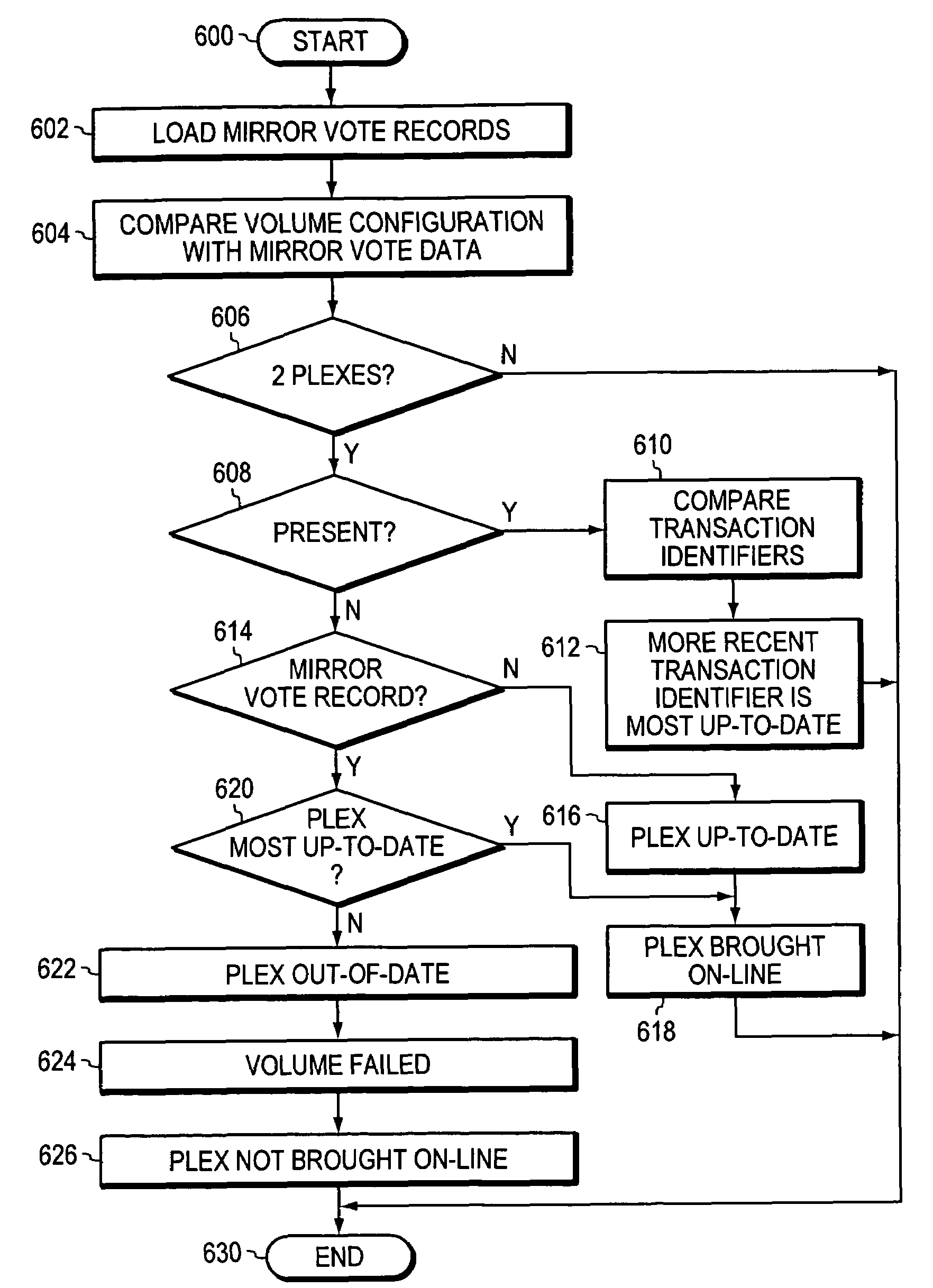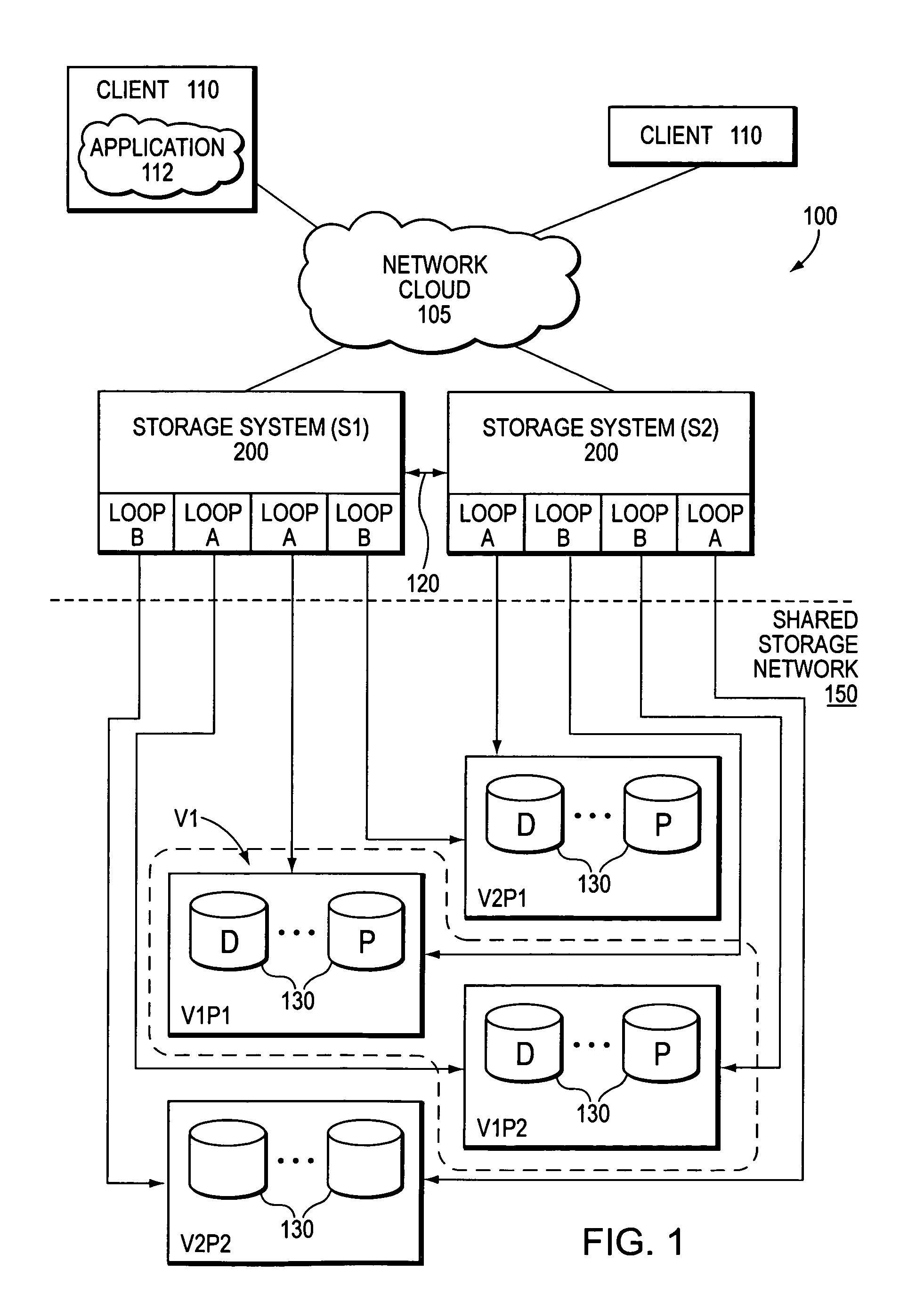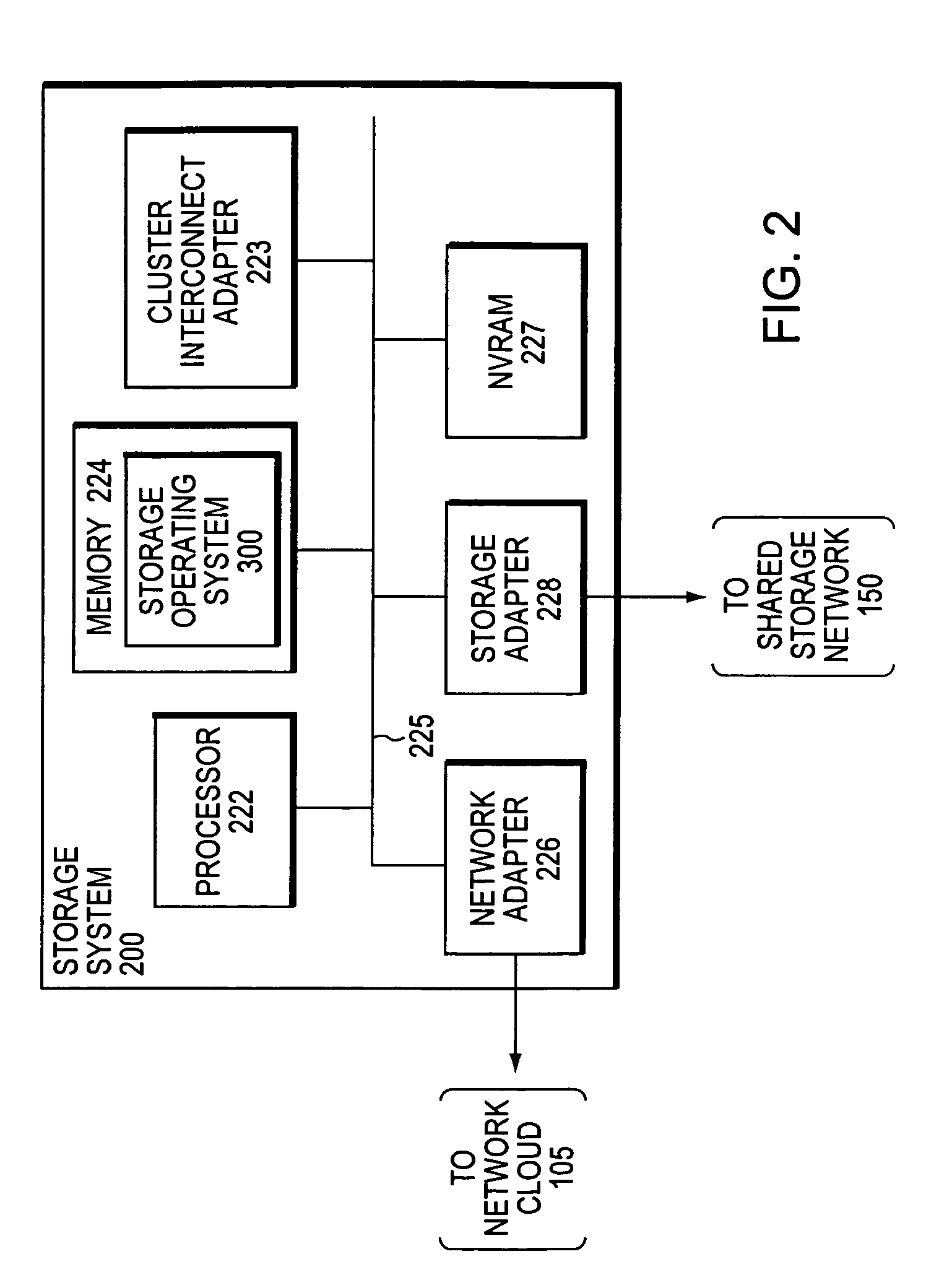Mirror split brain avoidance
a technology of mirror split and brain, applied in the field of storage system transfer service, can solve the problems of data loss, data failure, and inability to recover data from the device,
- Summary
- Abstract
- Description
- Claims
- Application Information
AI Technical Summary
Benefits of technology
Problems solved by technology
Method used
Image
Examples
Embodiment Construction
[0035]FIG. 1 is a schematic block diagram of a cluster failover (CFO) system configuration 100 comprising a pair of storage systems (S1, S2) 200 coupled by a dedicated, memory based cluster interconnect 120 that may use a variety of different technologies to provide a private communications mechanism. The clustered storage systems are also coupled to a shared point-to-point storage network 150, such as a storage area network (SAN) configured to store information. The information may be stored on any type of attached array of writable storage device media such as video tape, optical, DVD, magnetic tape, bubble memory, electronic random access memory, micro-electro mechanical and any other similar media adapted to store information, including data and parity information. However, as illustratively described herein, the information is preferably stored on the disks 130, such as HDD and / or DASD.
[0036]A plurality of clients 110 connects to each storage system 200 over a network cloud 105...
PUM
 Login to View More
Login to View More Abstract
Description
Claims
Application Information
 Login to View More
Login to View More - R&D
- Intellectual Property
- Life Sciences
- Materials
- Tech Scout
- Unparalleled Data Quality
- Higher Quality Content
- 60% Fewer Hallucinations
Browse by: Latest US Patents, China's latest patents, Technical Efficacy Thesaurus, Application Domain, Technology Topic, Popular Technical Reports.
© 2025 PatSnap. All rights reserved.Legal|Privacy policy|Modern Slavery Act Transparency Statement|Sitemap|About US| Contact US: help@patsnap.com



